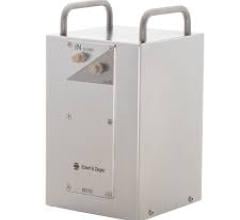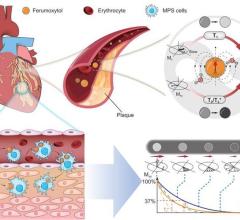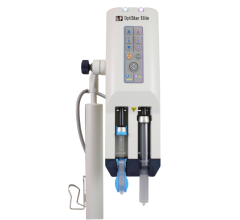May 4, 2007 - If a super-flu strikes, face masks may not protect you. Even so, the government says people should consider wearing them in certain situations, just in case.
The consumer advice issued Thursday reflects the fact that the science behind it is unclear. Whether widespread use of masks will help, or harm, during the next worldwide flu outbreak is a question that researchers are studying furiously.
But it's a question the public keeps asking as the government makes preparations for the next flu pandemic. So the Centers for Disease Control and Prevention came up with preliminary guidelines.
"We don't want people wearing them willy-nilly," said Dr. Michael Bell, a CDC infection-control expert. "The overall recommendation really is to avoid exposure."
When that's not possible, the guidelines say to consider wearing a simple surgical mask if:
- You're healthy and can't avoid going to a crowded place.
- You're sick and think you may have close contact with the healthy, such as a family member checking on you.
- You live with someone who's sick and thus might be in the early stages of infection, but still need to go out.
Consider wearing a more expensive, better-filtering mask called an N95 respirator if you're well but must take care of a sick person, they conclude.
But remember the mask doesn't take the place of basic precautions, including hand washing and avoiding contact with people who have respiratory infections, said Dr. Julie Gerberding, CDC director.
"We are concerned people will think the mask is the magic bullet. It can have a role in personal protection but they are not the only thing," Gerberding told a news conference in Atlanta.
Influenza pandemics can strike when the easy-to-mutate flu virus shifts to a strain that people never have experienced. Scientists cannot predict when the next pandemic will arrive, although concern is rising that the Asian bird flu might trigger one if it starts spreading easily from person to person.
It would take months to brew a vaccine, so the hunt is on for simple infection-control measures that communities could use in the meantime.
Topping that list: Avoid crowds, and avoid close contact with the sick unless you must care for someone, the CDC has long stressed. Flu spreads most easily to those within 6 feet of an infected person. And flu tends to be most contagious before people realize they're truly sick, when the very first coughing and sneezing begins and they're still likely to be out and about.
Why aren't masks a no-brainer to add to the list? They can help trap virus-laden droplets flying through the air with a cough or sneeze. But it's unclear whether large droplets or far tinier, so-called aerosolized particles are the bigger risk from flu.
Simple surgical masks only filter the larger droplets. But better-filtering respirators aren't for everyone. They must be fitted to the user's face, don't fit over beards, and many people find them hard to breathe in. Most people don't know how to use them properly, Gerberding said.
Plus, the CDC has wrestled with whether masks would create a false sense of security. Perhaps someone who should have stayed home would don an ill-fitting mask and hop on the subway instead.
Nor does flu only spread through the air. Say someone covers a sneeze with his or her hand, then touches a doorknob or subway pole. If you touch that spot next and then put germy hands on your nose or mouth, you've been exposed. (Hint: Public health experts now recommend sneezing into your elbow instead.)
It's harder to absent-mindedly rub your nose while wearing a mask. Conversely, faces get pretty sweaty under masks. Reach under to wipe that sweat, and users may transfer germs caught on the outside of the mask straight to the nose, Bell cautioned.
The CDC has long recommended that health workers who care for the sick during a pandemic be given masks, and the government is stockpiling for that purpose - amid dire warnings that supplies would quickly disappear once a pandemic struck.
Thursday's guidelines are the first for the general public, and likely will change later in the year as long-awaited results from mask research emerges. Meanwhile, there's no need for personal stockpiles, Bell said, although "if an individual feels more comfortable having a few at home, that's not unreasonable."
"When the CDC says 'consider,' the average citizen is going to respond by saying, 'I really ought to do this,'" said Jeff Levi of the advocacy group Trust for America's Health.
That will mean shortages, he said, calling for the government to increase stockpiles.


 July 09, 2024
July 09, 2024 








